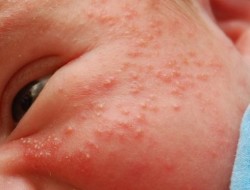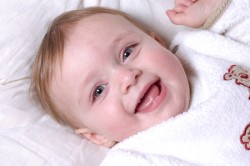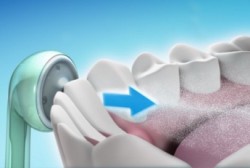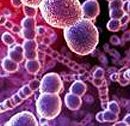What is an allergy?

Allergic reaction is a congenital feature of the human body to perceive external irritants too aggressively. At the same time, the most common things can act as the reaction pathogens - animal wool, household dust, food or flower pollen. Most often, such a sensitive feature appears in those people who have a hereditary genetic inclination to the development of allergies. In other words, some particular reaction to Allergen can be transferred from the father or mother, but only the predisposition to it. In addition, this phenomenon has no age framework and can begin at any age.
The appearance of allergies in infants is usually associated with food intolerance to certain products. However, in each case, experts are observed similar symptoms. Our site offers their list to familiarize themselves with young parents:
- atopic dermatitis;
- redness and peeling of the skin;
- constipation either diarrhea;
- asthmatic attacks;
- frequent joining;
- bloating;
- runny nose;
- Intestinal colic;
- the formation of seborrheic crusts on the head;
- Itching in the oral cavity.
Food allergy in babies

If you notice the symptoms of food allergies from your baby, you should contact a specialist to confirm or denied your suspicions. In any case, it is worth knowing that the manifestation of sensitive reactions in infants ages up to 5 months can be a consequence of too early dust. But if the symptoms appear in a one-year-old child, then this is a clear sign of the use of products from «Forbidden list». You will be able to minimize the manifestations of the ailment, if you don't get rushing with the introduction of new dishes in the diet.
So, for the diet the optimal option will be: cottage cheese, one kind of cereals, one kind of meat and two or three types of vegetables. Do not chase a variety, on the contrary - offer one product and carefully follow the reaction of the body of your crumbs. The most neutral porridge for children - oatmeal, buckwheat or rice. By the way, the most popular porridge of childhood, the manka, actually contains very little nutrient and useful substances.
From hypoallergenic vegetables, you can highlight: carrots, broccoli, zucchini and cauliflower. If you wish to roaming fruit, then give preference to bananas, pears and apples. But relative to meat it is best to start with turkey or lean pork.
Remember that food allergies will not pursue your child all the time. However, the first dust will require a unambiguous adjustment. In most cases, the cow's milk is well absorbed in the kid's body after 1 year of life, chicken eggs will be hypoallergenic after 2 years, and nuts and fish can be given after 3 years.
How to treat food allergies?
Of course, each specific case of food allergies is the individual reaction of the brittle body of the baby, and therefore the therapy can be appointed exclusively by the attending physician. Do not need to treat a child yourself or resort to «Tested folk remedies». If you do not have medical education, it is better not to expose health crumbs danger. Remember that the wrong approach to therapy can only aggravate the situation and provoke severe exacerbations.
Specialist will be able to determine allergies and appoint a course of treatment. The first place among the techniques is always given by dietherapy when dangerous products are excluded from the diet of the baby. Also, the doctor may appoint antihistamine drugs or register symptomatic treatment.
Household and Contact Allergies

This type of allergic reaction occurs in a child at the moment of direct contact with the stimulus, penetrating through the respiratory tract or the skin into the body. Often parents are confused by the manifestations of contact allergies with other skin diseases, since the symptomatics is largely similar. Symptoms of household allergies look like this:
- redness on the skin;
- Itching sebas;
- rash in the form of red spots or points;
- peeling of the dermis;
- ulcers and microcracks;
- Multiple sneezing.
Components may act as a sensitive reaction pathogen:
- spores of mold or yeast mushrooms;
- Chemical compounds in household chemicals;
- dust and dust tick;
- synthetic substances;
- poor-quality dye on clothing objects;
- cosmetical tools;
- Frams of wool and epidermis of animals.
As preventive measures, it is necessary to limit the access of the child to the means of household chemicals and cosmetics. It is also recommended to acquire only proven hygienic goods for the baby, in which the content of chemicals is reduced. And to strengthen the child's immunity, it is desirable several times a week to have a bathing of a baby in a bath with healing herbs: a lavender, a series, etc.
In addition, it is necessary to carry out wet cleaning of the room at least 2 times a day to eliminate all potential dust drives. To do this, carefully clean the children's toys, surfaces, sofas and carpets. In the bedroom, where the child is sleeping can not let domestic animals, and bedding should be washed at least once a week.









